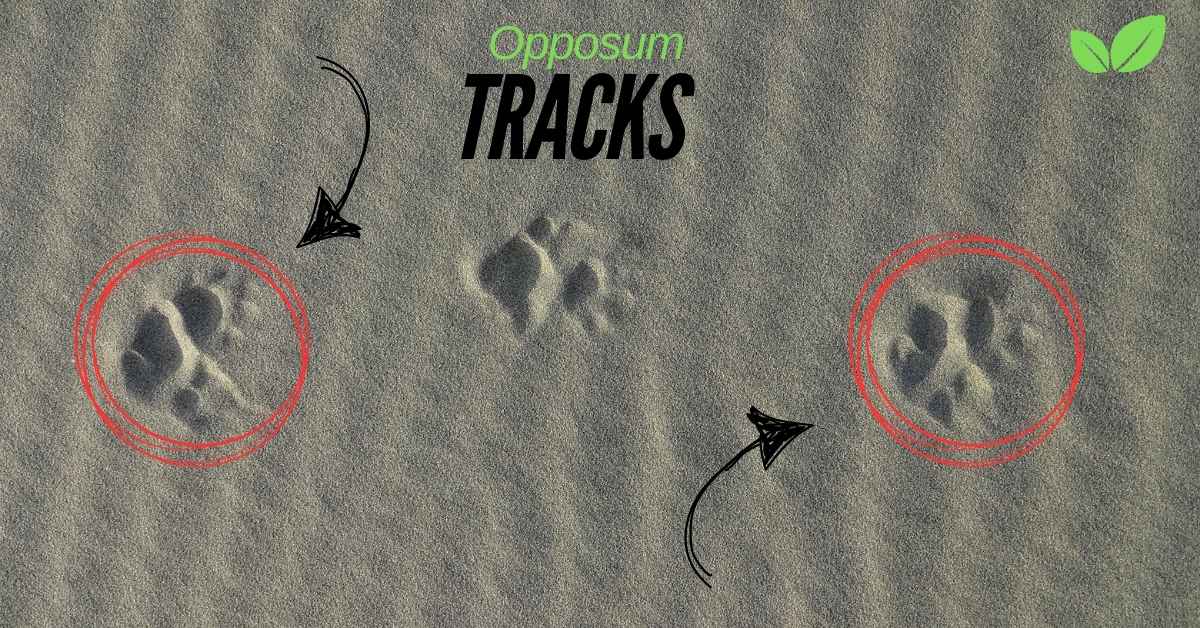Opossums are a fascinating species of marsupials native to the Americas, known for their distinctive behaviors, nocturnal habits, and ability to thrive in a wide range of habitats. Among the various wildlife signs that researchers, trackers, and nature enthusiasts observe, opossum tracks provide valuable insight into the animal’s behavior, movement, and interactions with its environment. The study of animal tracks, also known as “tracking,” plays a crucial role in wildlife conservation and management by helping scientists and conservationists understand species distribution, habitat preferences, and population health.
This article delves into the environmental niche of opossum tracks, exploring the unique characteristics of their footprints, the ecological roles opossums play, and the importance of understanding their tracks in the broader context of ecosystem health and wildlife tracking. We will also examine how the presence of opossum tracks contributes to biodiversity monitoring and the importance of citizen science in tracking opossums across various landscapes.
Introduction to Opossums
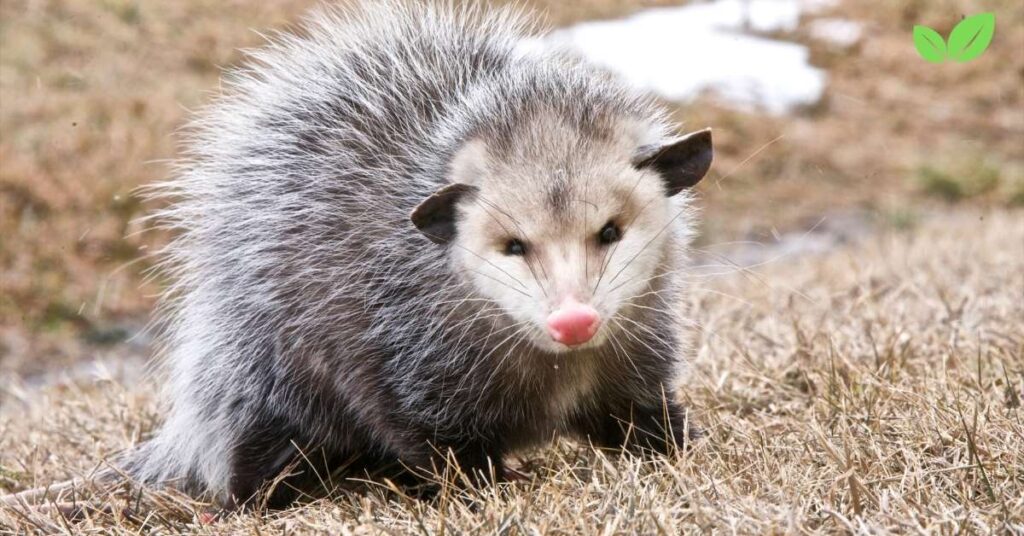
Opossums belong to the family Didelphidae, and the most well-known species in North America is the Virginia opossum (Didelphis virginiana). As the only marsupial found north of Mexico, the Virginia opossum has adapted to a wide range of environments, including forests, wetlands, urban areas, and agricultural lands. Opossums are nocturnal creatures with omnivorous diets, feeding on insects, small animals, fruits, grains, and even carrion.
One of the most distinctive characteristics of opossums is their ability to use their prehensile tails to grasp objects and climb trees. They are also famous for their behavior of “playing dead” (thanatosis) as a defense mechanism when threatened. Understanding opossums’ tracks can provide important information about their movement patterns, habitat use, and ecological role.
Physical Characteristics of Opossum Tracks
Opossum tracks are relatively easy to identify, thanks to their unique structure. They have an unusual gait and five distinct toes on both their front and hind feet, which leave behind recognizable prints in soft soil, mud, snow, or sand. The key features of opossum tracks include:

- Five Toes on Each Foot: Opossums have five toes on their front and hind feet. The hind foot has an opposable thumb, which does not leave a claw mark, similar to a human thumb. This opposable thumb is one of the most distinguishing features of opossum tracks.
- Front Footprints: The front feet are smaller than the hind feet and show five distinct toe prints, each with sharp claws that may leave marks. The tracks are often oval-shaped, and the toes are spread out in a star-like pattern.
- Hind Footprints: The hind feet are larger than the front feet and are notable for their opposable thumbs. The toes are more elongated compared to the front feet, and the lack of a claw mark on the thumb is a key feature in distinguishing opossum tracks from other animals. The hind prints often show a wide gap between the thumb and the other four toes.
- Track Size: Opossum tracks can vary in size, but on average, the front foot measures about 1 to 2 inches in length, while the hind foot is slightly larger, typically 1.5 to 2.5 inches long.
- Track Pattern: Opossums have a distinctive walking pattern known as “plantigrade” walking, meaning they walk on the soles of their feet. Their track pattern is asymmetrical, with the hind feet often overlapping the front tracks. This creates a staggered, irregular trail as the animal moves.
These characteristics make opossum tracks easy to identify in the wild, especially in areas where soft ground or snow allows clear impressions.
Tracking Opossums: Understanding Behavior Through Tracks
Opossum tracks provide critical information about the animal’s behavior and movement in its environment. By analyzing the direction, spacing, and pattern of tracks, wildlife trackers can infer several important aspects of opossum behavior:
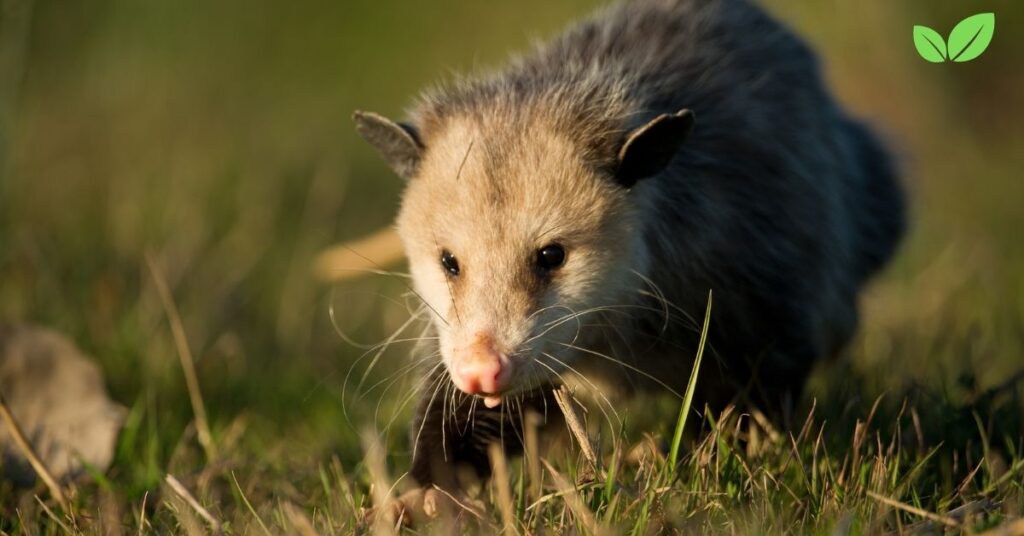
1. Movement Patterns and Speed
Opossums are generally slow-moving animals, and their tracks often reflect this. The distance between footprints is usually short, indicating a leisurely pace. However, when an opossum is startled or fleeing from a predator, the stride may lengthen, and the tracks may show signs of more erratic movement. In contrast, when they are searching for food, their tracks may be tightly spaced, indicating a slower, more deliberate pace as they forage.
Opossums often move in a somewhat lurching or shuffling gait, and their tracks reflect this uneven motion. Trackers can also determine whether the opossum was walking, trotting, or bounding by studying the track spacing.
2. Foraging Behavior
As opportunistic omnivores, opossums forage for a wide variety of food items. Their tracks can often be found near water sources, under trees, or in gardens, where they may be searching for insects, small animals, fruits, or plant material. Opossum tracks may also be found near human structures like trash cans or compost piles, as these animals are known to scavenge in urban environments.
By examining the distribution of tracks and their proximity to food sources, trackers can gain insights into the foraging habits of opossums and their preferred food items in different habitats.
3. Climbing Behavior
Opossums are adept climbers, and their tracks can sometimes be found near trees or other vertical structures. In addition to their footprints, evidence of climbing can be seen in claw marks on tree trunks or scratch marks on fences. Opossums use their prehensile tails and sharp claws to grip surfaces and climb, especially when they are seeking shelter or searching for food in trees.
Climbing behavior is particularly common when opossums are seeking out fruit or bird eggs in trees, and their tracks leading to and from a tree may indicate this behavior.
Ecological Role of Opossums and Their Environmental Niche
Opossums occupy an important ecological niche as both scavengers and predators. Their role in ecosystems is multifaceted, as they help control insect populations, clean up carrion, and disperse seeds through their foraging activities. Understanding opossum tracks can provide valuable information about their interactions with other species and their impact on the environment.
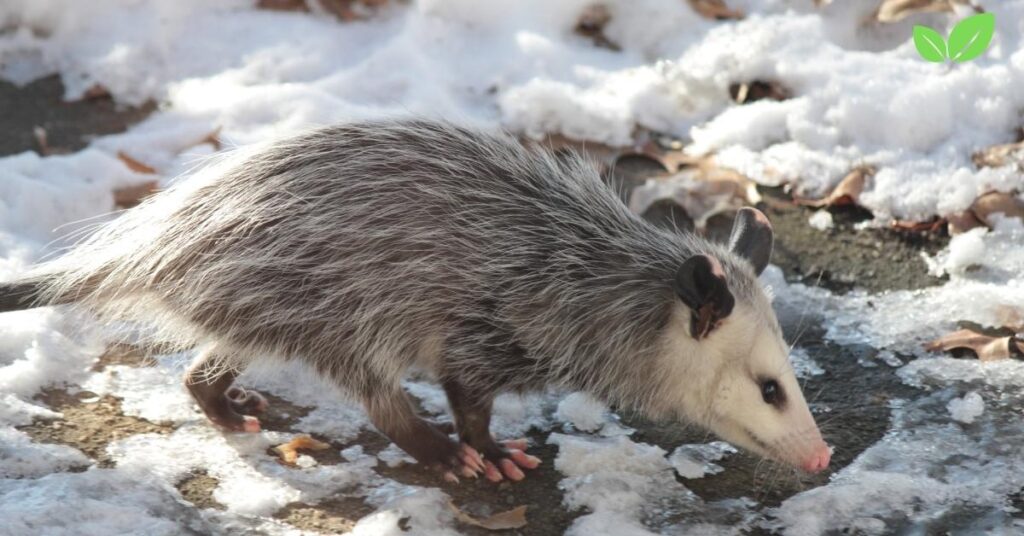
1. Scavenging and Disease Control
One of the primary roles that opossums play in their ecosystem is that of a scavenger. They feed on carrion, which helps to clean up the environment and reduce the spread of diseases. By consuming the remains of dead animals, opossums prevent the buildup of decaying organic matter, which could otherwise attract harmful bacteria and pests.
Tracking opossums in areas where carrion is present can reveal the extent to which these animals contribute to sanitation and disease control in their habitats. Their scavenging behavior benefits the ecosystem by maintaining cleanliness and reducing the risk of disease transmission.
2. Pest Control
Opossums are natural pest controllers, feeding on a variety of insects, including beetles, crickets, cockroaches, and even ticks. In fact, opossums have been shown to significantly reduce tick populations by consuming ticks they encounter while grooming themselves. By keeping insect populations in check, opossums contribute to the health of their ecosystems and reduce the prevalence of pests that can affect both wildlife and human health.
The presence of opossum tracks near insect populations, such as in wooded areas or near gardens, can indicate their role in pest control. Trackers can use this information to assess the impact of opossums on local insect communities.
3. Seed Dispersal
Opossums also play a role in seed dispersal through their foraging activities. As they consume fruits and berries, they often disperse the seeds in their droppings, contributing to the regeneration of plants and trees. This process helps maintain the diversity and health of plant communities, particularly in forested areas where opossums are common.
The presence of opossum tracks in areas with fruit-bearing plants can indicate their involvement in seed dispersal and their contribution to plant diversity.
The Role of Opossum Tracks in Biodiversity Monitoring
Opossum tracks are an important tool for biodiversity monitoring and wildlife conservation. By tracking opossums, scientists can gather data on species distribution, habitat preferences, and population trends. This information is essential for managing wildlife populations, protecting habitats, and promoting conservation efforts.
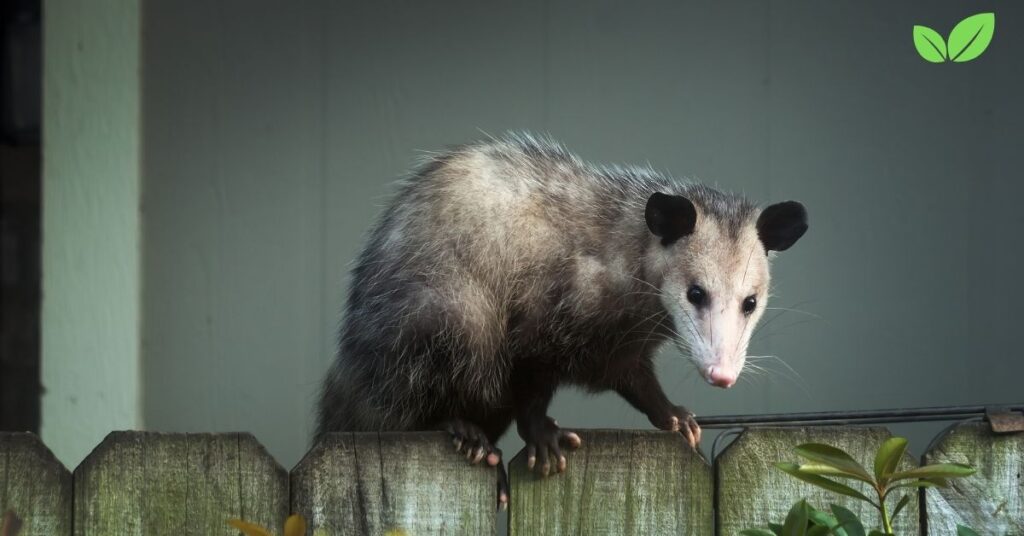
1. Species Distribution and Habitat Use
Tracking opossum footprints can provide valuable information about their range and habitat preferences. Opossums are adaptable animals that can thrive in a variety of environments, from dense forests to urban areas. By documenting the locations of opossum tracks, researchers can map their distribution and identify key habitats that are critical to their survival.
This information is particularly important for understanding how opossums respond to changes in land use, such as urban development or deforestation. Monitoring opossum tracks can help conservationists identify areas where habitat protection or restoration efforts are needed to support healthy opossum populations.
2. Population Monitoring and Health
The frequency and abundance of opossum tracks can also provide insights into population health and dynamics. In areas where opossum tracks are abundant, it may indicate a healthy and thriving population. Conversely, a decline in the number of tracks may signal potential threats to the population, such as habitat loss, disease, or predation.
By regularly monitoring opossum tracks, researchers can detect changes in population trends and assess the overall health of the species in a given area. This information is crucial for making informed decisions about wildlife management and conservation strategies.
3. Citizen Science and Wildlife Tracking
Citizen science initiatives have become an important part of wildlife tracking, and opossum tracks are often a focus of such programs. Citizen scientists, including hikers, naturalists, and outdoor enthusiasts, can contribute valuable data by documenting and reporting opossum tracks in their local areas.
Through smartphone apps, online platforms, and community projects, citizen scientists can upload photos and GPS coordinates of opossum tracks, helping researchers build comprehensive databases of species distribution and habitat use. These collaborative efforts enhance our understanding of opossum ecology and contribute to broader conservation goals.
Opossum Tracks in Urban Environments
Opossums are highly adaptable animals that have increasingly been observed in urban environments. Their tracks can be found in city parks, backyards, and even in areas with heavy human activity. As cities continue to expand into natural habitats, opossums have learned to take advantage of urban resources, such as food waste and shelter.
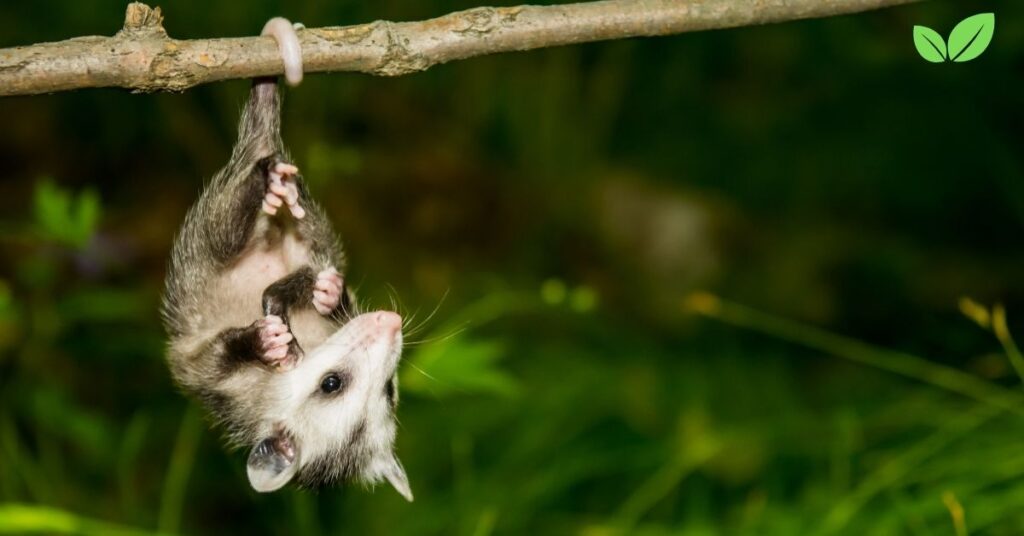
1. Urban Foraging
In urban settings, opossums often forage for food in gardens, trash cans, and compost piles. Their tracks may be found near these food sources, indicating their presence in the area. While opossums may sometimes be considered a nuisance in urban areas, they also provide ecological benefits by controlling pests and scavenging waste.
2. Shelter in Urban Areas
Opossums are nocturnal creatures that seek shelter during the day. In urban environments, they often take refuge in attics, garages, or under decks. Their tracks leading to and from these structures can provide clues about their movement patterns and sheltering behavior. Understanding these patterns is important for managing human-wildlife interactions in urban areas.
Conclusion: The Importance of Opossum Tracks in Ecological Understanding
Opossum tracks offer a unique window into the behavior, movement, and ecological roles of these fascinating marsupials. By studying their tracks, researchers and nature enthusiasts can gain insights into how opossums interact with their environment, their role in controlling pests and disease, and their contributions to seed dispersal and biodiversity.
Tracking opossums is not only a valuable tool for understanding their ecological niche but also a critical component of wildlife conservation and management. As human activity continues to impact natural habitats, the ability to monitor and understand the movement of species like opossums becomes increasingly important for protecting ecosystems and maintaining biodiversity.
Whether found in forests, fields, or urban settings, opossum tracks serve as a reminder of the intricate connections between wildlife and their environment, and they highlight the importance of preserving these connections for future generations. Through continued research, citizen science, and conservation efforts, we can ensure that opossums and the ecosystems they inhabit remain healthy and resilient.
Read More: Rabbit Deterrent: Sustainable Solutions to Protect Your Garden and Landscape

